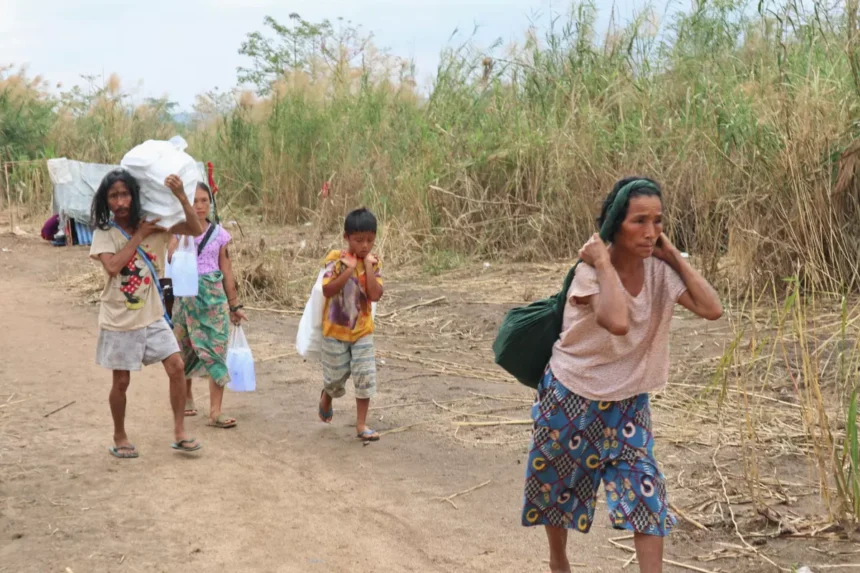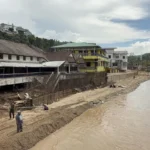In addition to being a popular tourist destination, Thailand has long been a refuge and transit point for displaced communities, including refugees from neighboring Myanmar, stateless ethnic minorities, and internal migrants affected by economic hardship and environmental disasters.
The country hosts thousands of displaced individuals in camps along its borders and informal settlements in urban and rural areas. Many of these communities lack legal recognition, access to stable housing, and economic opportunities, leaving them vulnerable to poverty and exploitation.
Natural disasters such as flooding, coastal erosion, and deforestation have exacerbated internal displacement, particularly in southern and central Thailand. Additionally, Bangkok and other major cities are witnessing increasing rural-to-urban migration and overwhelming urban infrastructure, creating a need for more sustainable housing solutions.
Given the challenging climate of displacement and housing uncertainties, Thailand requires innovative, community-driven approaches to ensure long-term resilience and integration for its displaced populations.
The host country’s government can alleviate the pressure of providing for the displaced by enabling the migrant populations to have self-sustaining design solutions. A community-driven approach would reduce these communities’ dependence on external aid and create channels and systems of self-sufficiency.
Chumchon (Community) Kits: A Self-Governance Model
Traditional rehabilitation models often rely on prolonged external aid, leading to dependency. Chumchon Kits empower displaced populations to provide for themselves, fostering a sense of ownership and reducing reliance on government or NGO assistance.
In Thailand, where stateless communities and displaced migrants often struggle with legal recognition, enabling self-sufficiency at the community level can promote social stability and integration.
Building upon the existing aid infrastructure offered by the UNHCR to displaced communities, the design proposes a Chumchon kit consisting of a basic set of materials given to each arriving refugee family. This kit would be the starting point of communal collaboration by facilitating the sharing of resources provided by the families.
The Chumchon Kit, accessible only through women’s collective participation, contains shared resources like solar cookers, sewing machines, and gardening tools.
Women can use these tools to establish small businesses, cultivate food, and distribute household responsibilities by working together. This collaborative approach not only fosters economic self-sufficiency but also strengthens social bonds within the community. This object-scale intervention introduces a new way of managing resources—it gives the refugees the autonomy to use resources according to their needs.
These new usage patterns, in turn, influence how refugees interact with space, time, and skills, embedding communal practices into their everyday lives.
To support this process, a pictorial guide is developed to illustrate using the Chumchon kit. This guide empowers users, encouraging them to create, illustrate, and rely heavily on architects or external aid.
This progression leads to the second phase of the design – the spatial-scale interventions. These interventions unfold at two levels: the women’s courtyard, a shared space for domestic activities, and the Chumchon school, a larger, more structured environment focused on education, skill-building, and income generation.
Women’s Courtyards
Displacement disproportionately affects women and children, making it essential to create safe communal spaces that empower them. Women’s Courtyards are designed to serve as secure environments where women can engage in skill-building, childcare, and economic independence.
In Thailand, where many displaced women lack formal work opportunities, such spaces can help foster entrepreneurship and financial independence, particularly in handicrafts, textiles, and sustainable farming.
The design proposal is split into the individual dwelling unit sectors and the relationships it can create with the surrounding dwellings to create communal spaces for women.
This is where communal sharing of resources begins and later grows into larger networks addressed by the second part of the proposal. The second part—the ‘Chumchon school’—is more public and deals with income generation activities for refugees and self-organization techniques.
When families come together to share the Chumchon kit and follow the pictorial guide, they can allot courtyard spaces between shelters to carve out spaces for Women’s courtyards.
These become spaces where the women can engage in communal activities like cooking, growing vegetables, and helping each other with domestic activities.
With activities like cooking and storage being shifted out of the shelters, this shifting shelter becomes less cramped, and women no longer have to spend all day cooped up indoors. Daily chores like cooking, washing clothes, and supervising children can now be performed collectively and outdoors.
The Chumchon School in Thailand
Education and vocational training are crucial for displaced individuals to regain agency. The Chumchon School is a modular, adaptable space providing employment opportunities, particularly for women and youth.
Given Thailand’s high number of providing and displaced persons, vocational training in digital skills, agriculture, and eco-tourism can provide essential pathways toward economic stability and integration.
Run in partnership with UN Women and Women’s Led Community Centers, these pop-up schools provide women access to formal education, skill training, and employment opportunities.
This can be seen as expanding the women’s courtyard to a bigger learning and working space for women. The proposed design is modular and has a flexible layout to adapt to the school.
Different iterations are possible. Work and learning spaces can be completely enclosed, open, or shed-like. They can also consist of classrooms for women and children and workshops for different activities.
Socio-Economic, Political, and Environmental Relevance
Thailand’s displacement crisis is deeply intertwined with its socio-economic and political landscape. With increasing migration due to economic disparities, environmental degradation, and regional conflicts, the current approach to rehabilitation is unsustainable. Here’s why a shift toward community-driven, sustainable housing solutions is imperative:
- Refugee and Migrant Displacement – Home to one of Southeast Asia’s largest refugee populations, particularly along the Myanmar border, many of its refugees live in temporary shelters with restricted movement and limited access to employment. Sustainable housing models that integrate community governance and economic opportunities can provide long-term solutions for these communities and help reduce dependency on external aid.
- Socio-Economic Stability and Urban Integration – Rapid urbanization has led to overcrowding in cities like Bangkok and Chiang Mai, with many migrants and displaced individuals living in precarious conditions. Informal settlements often lack access to clean water, electricity, and healthcare. By embedding vocational training and economic opportunities into rehabilitation settlements, even local displaced populations can transition into the workforce and contribute to local economies.
- Political and Policy Challenges – Thailand’s policies toward displaced persons and stateless individuals remain complex, with many lacking legal recognition or pathways to citizenship. Many displaced communities face persistent instability without secure land tenure or access to government services. A bottom-up approach that empowers local communities can complement national policies and ensure that rehabilitation efforts are scalable and culturally appropriate.
- Community Empowerment and Social Cohesion Displacement often leads to the breakdown of communities and social networks. Social cohesion can be strengthened by creating self-sufficient, participatory housing models, reducing tensions between displaced populations and host communities. The self-governance aspect of a sustainable framework ensures that displaced individuals have agency over their living conditions, fostering stability and cooperation.
Conclusion
Thailand is at a critical juncture in addressing its displacement crisis. The traditional approach of temporary shelters and ad-hoc resettlement measures is no longer viable. A paradigm shift toward sustainable, people-centred design is essential.
By implementing frameworks like the Chumchon Kits and Chumchon School, Thailand can create displacement housing that is humane and functional while also being self-sufficient and empowering.
Integrating Chumchon Kits, Women’s Courtyards, and the Chumchon School into Thailand’s housing policy will promote long-term resilience, reduce dependency on external aid, and foster economic independence and social stability.
Policymakers, urban planners, and humanitarian organizations must rethink displacement housing – not as a temporary fix, but as a foundation for a more inclusive and resilient future.
Author: Sameedha Mahajan














